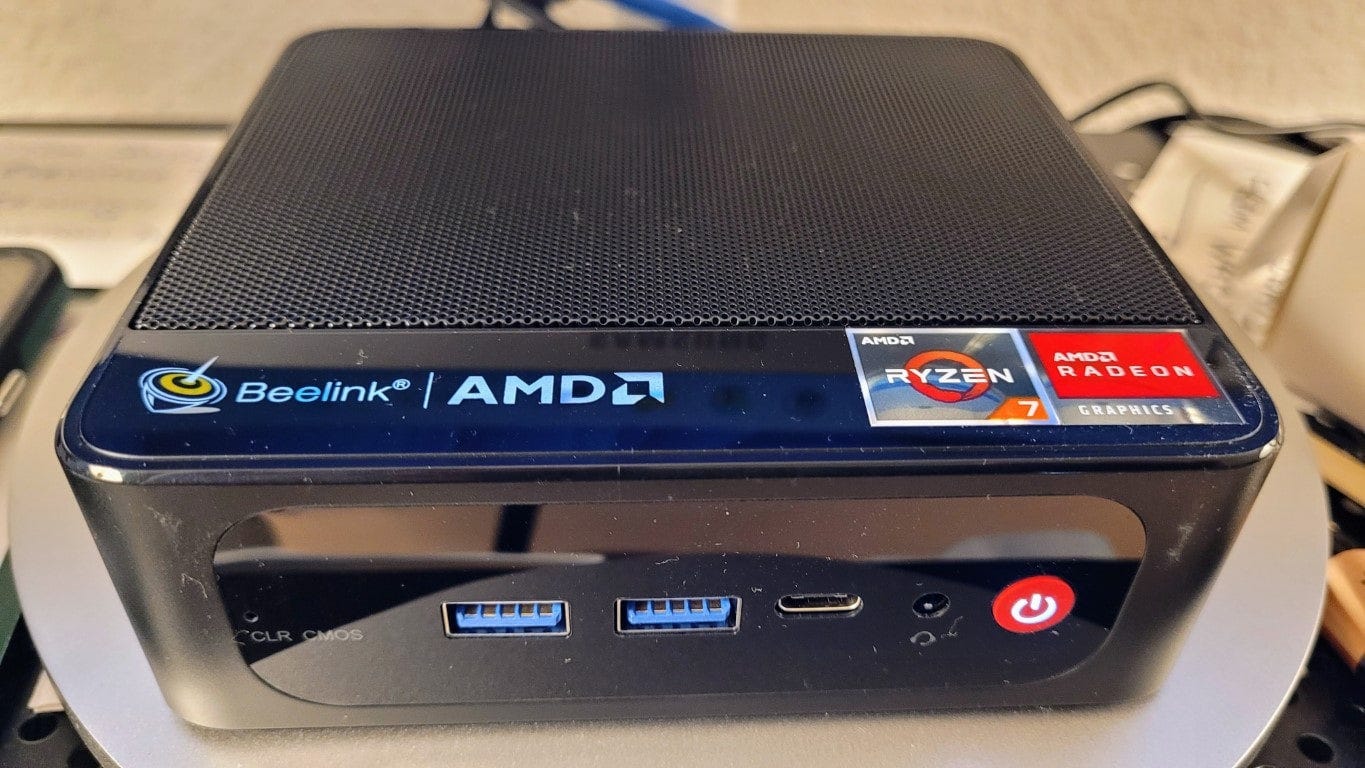Several days ago I received a new mini-computer and immediately went about setting it up and testing it. The computer? The Beelink Mini PC AMD Ryzen 7 3750H.
Here’s a picture I took of it (dust specks included):
My old HP Pavilion computer wouldn’t upgrade to Windows 11 even though every test I found online said it was Windows 11 ready. It has been getting a bit “glitchy” recently so decided to try a replacement. I have wanted to try a mini PC so this was my opportunity.
Amazon had a good discount going on the Beelink unit and it featured an AMD Ryzen processor. A few of my other computers are also running AMD processors and I’ve been very happy with their snappy performance. So a mini PC with a Ryzen chip and an SSD for primary mass storage, on sale? Sold.
This little guy is about five inches wide and a bit more than one-and-a-half inches tall. It’s small. You can find the specs on the Beelink website linked above.
It is running Windows 11 Pro rather well. I have noticed a bit of hesitation when I have an active Zoom session underway with Outlook and Slack also running, but the CPU monitor I use (Rainmeter) has shown the CPU running at up to about 60% capacity. Memory usage seems a bit higher than on my old Pavilion when running the same apps but it’s nothing to be concerned about.
It came with 16 gigabytes of RAM and a 500-gigabyte SSD M.2 drive. Last night I removed the bottom plate to see what upgrade options are available. The two 8-gigabyte RAM sticks are Crucial-branded and the SSD is by Kingston. For the price I paid, I expected off-brand components. I was pleasantly surprised to find name brands instead.
There is an empty compartment attached to the baseplate of the PC. It is already configured for a 2.5-inch SATA III SSD. In a few days, two 16-gigabyte sticks of RAM will arrive, along with a 2-terabyte SSD drive. The increased memory should give my programs a bit more headroom when I am multitasking, and the SSD drive will let me keep my data separate from the M.2 drive with the operating system and programs.
Does it get warm? Right now the CPU cores are running at 124° Fahrenheit (51° C) with multiple programs running. That seems very reasonable to me. One of the additional selling points for me was that this unit features active cooling. The internal fan is triggered by rising temperatures. I have gone into the BIOS and lowered the temperatures at which the different fan speeds are triggered, just because I would like to stop the CPU from getting overly warm.
And speaking of warm, the PC remains cool on the top, front, and sides. The base feels just a bit warm and I can feel warm air being pushed out the back of the unit. Right now, it is completely silent. I think it will remain that way although adding the 2-terabyte SSD drive may increase the heat inside the case.
I’m not a gamer so the Beelink is just running basic productivity apps for word processing, email/calendaring, browsers, and video conferencing. For these uses, it seems completely adequate. This PC presents an amazing amount of computer power in a case that can slide into a coat pocket. I don’t know how reliable it will be but so far, I am very pleased.



This evening I swapped out the 16 gigs of RAM for 32 Gb (two sticks of Crucial DDR4 RAM). I also added a 2.5" SATA SSD to the unit. Could not have been easier. The computer is running very smoothly. It likes the additional RAM!